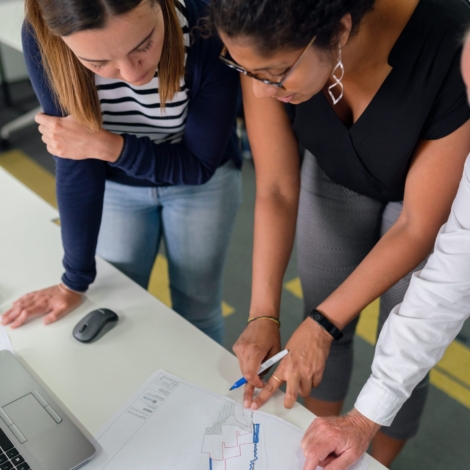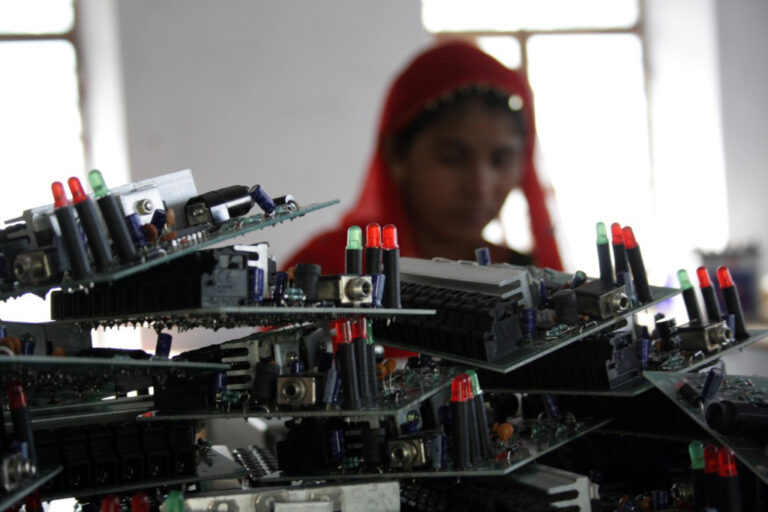Engineers working to ensure that their solutions meet needs equitably across different populations are intentional about who they’re designing for. Inclusive design is a powerful approach that improves engineering solutions to make them more universally usable. During a session offered to E4C’s Fellows, Dr. Eva Cheng, Associate Professor at the University of Technology, Sydney, analyzed four toolkits by four organizations that can be useful in ensuring gender inclusion and equitable engineering solutions.
Theories and frameworks on gender inclusion
Dr. Cheng mentions two theories that can guide gender-inclusive design. The first focuses on biological determinism and social construction.
“Nowadays, people are using social construction, as there is a relationship with biological sex, but it is not a direct relationship with biological determinism,” she says.
Read More: Checking Under the Dashboard: Gender Bias in Data and Tech
The second, intersectionality, describes the different aspects of a person’s identity interact to create their experience. This is important when considering gender inclusivity because gender is not the only aspect of a person’s identity that plays a role in their experience. For example, race, socio-economic status, nationality, sexual orientation and many other factors merge in each person. Dr. Cheng urges designers and engineers to draw on the theory of intersectionality while designing inclusively.
“This is the opportune time to look at how intersectionality can apply in your design process and outcome. Like what dimensions of your users or beneficiaries might you have to include and the diverse perspective at different stages such as testing or while working with a design team so that the projects are inclusive.”
Lenses: Diversity, equity and inclusion and human rights
Viewing designs from different perspectives, or lenses, can improve gender inclusivity. One such lens is that of diversity, equity and inclusion. A DEI lens is complex, she says, and people are comfortable talking about diversity in different ways. One way to present diversity in a palatable fashion is through the United Nations Sustainable Development Goals. SDG 5 is titled ‘Achieve Gender Equality and Empower All Women and Girls.’ That gender equality goal can be helpful to frame DEI within a gender perspective as part of holistic sustainability.
Another way of talking about inclusion is through a human rights lens, which is slightly different from the SDG lens. Dr. Cheng mentioned three articles from the declaration of human rights that can be critical in engineering fields. Those are Article 21 ‘Everyone has the right to equal access to public service in their country,’ Article 25 ‘Everyone has the right to a standard of living adequate for the health and well-being of himself and his family,’ and Article 26 ‘Everyone has the right to education.’
Gender-inclusive engineering toolkits for sustainable development
Dr. Cheng recommends four toolkits that offer techniques practitioners can adapt to their context.
Gates’ Gender Equality Toolbox
One thing that Dr. Cheng likes about this toolbox is the gender lensing approach applied to all aspects of a project, and it has a series of different tools and techniques that one can download and apply to the impact projects that you are undertaking.
“One of the first things you can look at is how the gender lens can be part of the gender analysis of your impact projects and how you can apply different tools and techniques. Gender lens means seeing different angles of your project as to whether or not there has been a gender thought, “ she notes.
The Gates Gender Equality toolkit categorizes gender as being unintentional, intentional, and transformative.
Inclusive design framework (Microsoft)
Inclusive design has extended beyond the internet to include devices, a product, a service, or a system, and Microsoft’s toolkit supports physical product design as well as software.
Dr Cheng says, “What l like about the Microsoft toolkit is the support cards which get engineers thinking about the context or characteristics of the users of their design or the beneficiaries who might be using their solution.”
The first design card assists engineers in thinking about their physical context or environments where someone might interact with their design, product, service, or system. This can affect the design needs even if it’s the same product. The second card covers social context. This is who might be the beneficiary while using your design, and who might be with them when they use it. Whether they use it while they are alone or in a public space could change their needs for your design.
The third card is a temporary or situational limit. This one relates to accessibility, but does not necessarily imply a permanent disability. It could be temporary or situational. The fourth card is an example of a mismatch. Exclusion can be caused by mismatched interactions between other humans, humans and their environments, and humans with their objects.
Inclusive design framework (Cambridge)
Dr. Cheng indicates this closely relates to the human-centered design process from Stanford, which helps to explore the needs of potential users throughout the process of design, prototyping, testing, communicating and repeating the sequence. Also, it entails the use of stakeholder maps, observations, personas and user journeys. It will then be important to decide on design characteristics or criteria that might be captured in your project.
Inclusive Design Framework (OCAD)
Through this toolkit, engineers start by identifying their users, as the user is at the center of the needs the design should meet. Using a diagram, the toolkit visualizes the people who can work well with a design, followed by the people for whom the design is difficult to use, then the people who can’t use the design because their needs have not been met.
“The problem we have today is that when we have a non-inclusive design, we only design for the people who can easily use your design,” Dr. Cheng says.
Dr. Cheng admits that it is not possible to have an inclusive design that meets 100 percent of people’s needs, but it is good to leave room for improvement.
After identifying the users, engineers can map the needs of each group of users by using as many ‘wedges’ as needed. The third step of this framework is in the form of a tornado which includes the iterative process where engineers assess who is missing in the cycle and ensure their needs are met.
These four toolkits suggest that gender inclusion in engineering is a mindset rather than a box to check. It is a process that can be woven into every stage of design. As Dr. Cheng says, inclusive design is about intention, awareness, and a willingness to improve with each iteration. The result can be stronger, more sustainable products and services that reflect the realities of users and the world.
About the Author
Mercy C. Wanjiku Nduati is the Engineering for Change Editorial Fellow for 2025. She also works on the editorial staff of the Vennomax Media Network that publishes the Industrial Journal magazine. And she has written for the magazine Kenya Engineer, published by the Institution of Engineers in Kenya. She holds a bachelor’s degree in communication and media from Egerton University.

